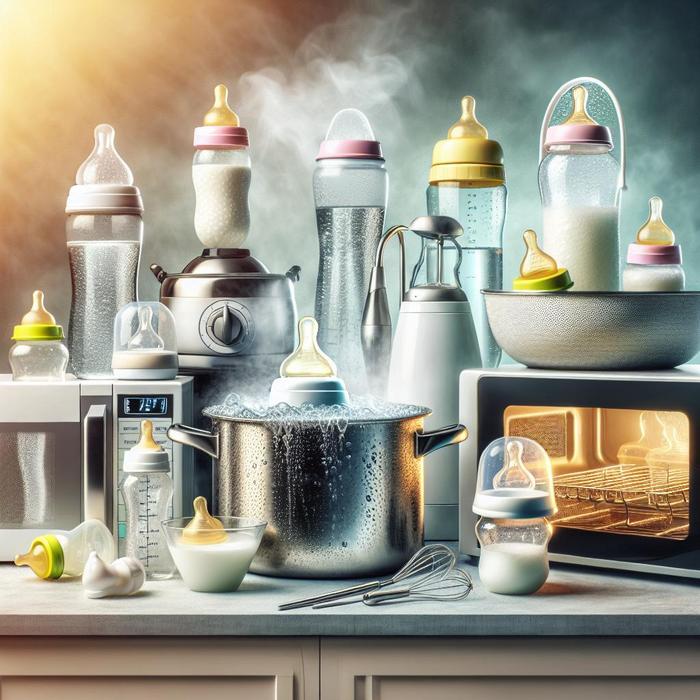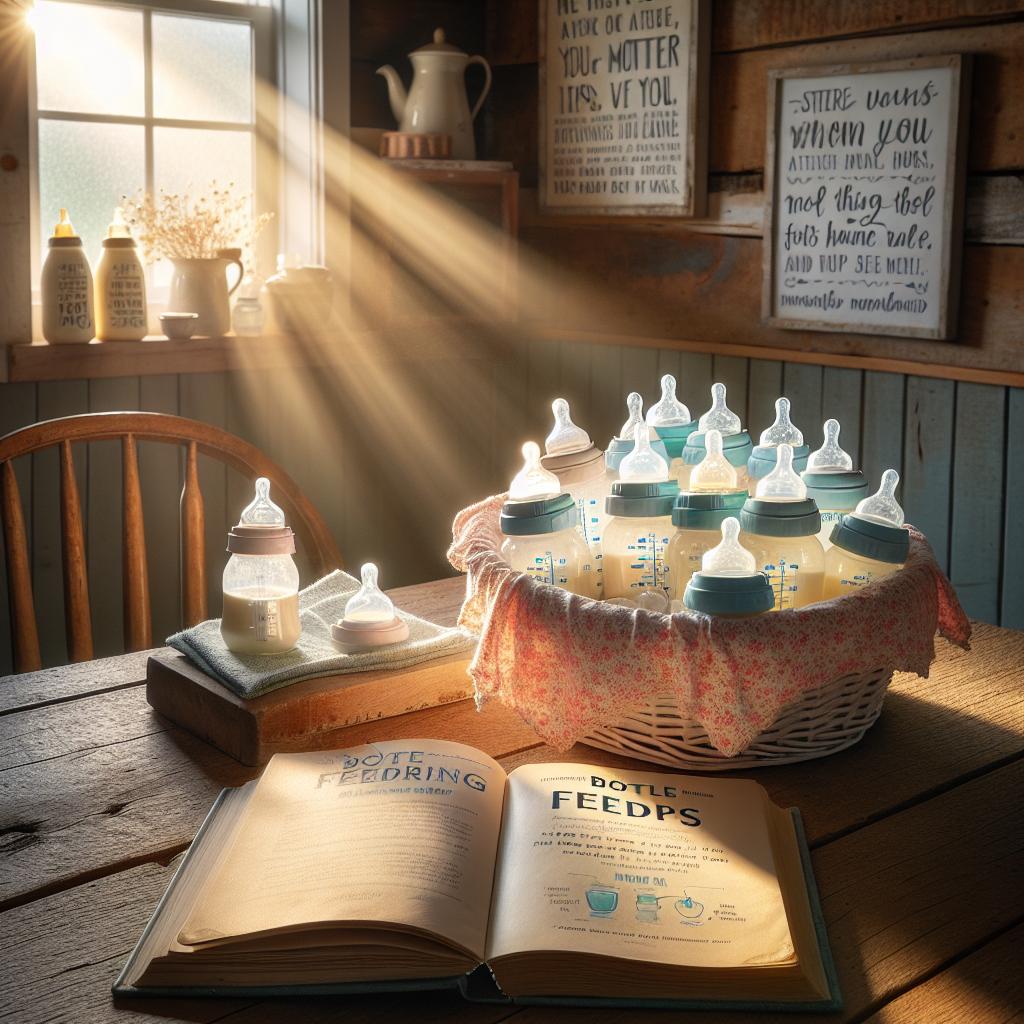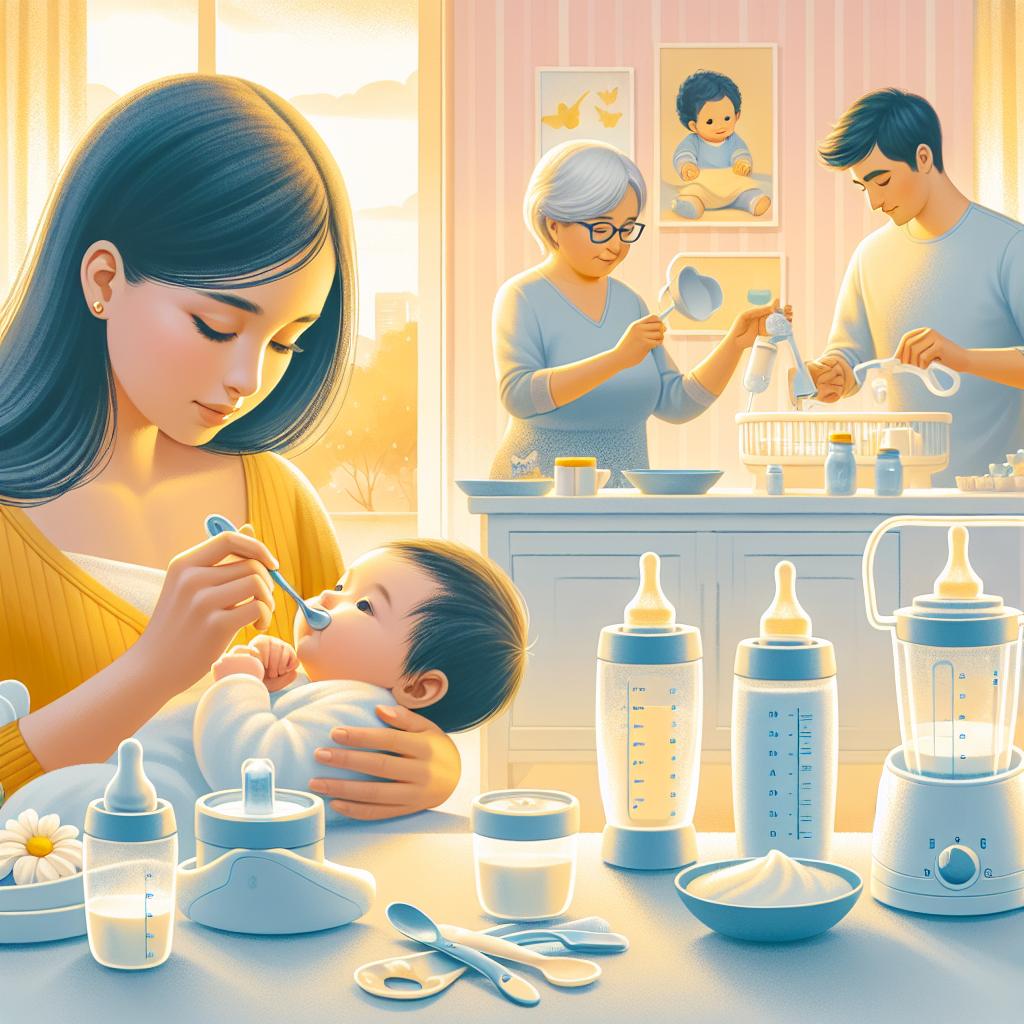The Importance of Sterilizing Baby Bottles
Starting on your journey as a new parent, you come across various daunting tasks. One such crucial task that requires your utmost attention is sterilizing baby bottles. Proper baby bottle care involves a thorough knowledge of hygiene standards and the understanding of how to keep your baby safe from harmful bacteria. Let’s delve deeper into this all-important task.
Understanding Why Sterilizing is Vital
Your newborn baby’s immune system is not fully developed. It leaves them more susceptible to infections and illnesses. Uncooked milk residue, saliva, and even tap water can introduce bacteria into baby bottles that can multiply at a rapid pace (CDC). Unchecked, this can cause tummy troubles or, worse, serious health conditions.
Key Steps to Clean Baby Bottles
Step 1: Dismantle the Baby Bottle – Separate all components of the bottle, including the bottle cap, nipple, and any rings or valves attached.
Step 2: Rinse Immediately After Use – As soon as your baby has finished drinking, rinse the bottle and its components under running water to remove any milk residue.
Step 3: Soak in Warm Soapy Water – Soak the dismantled bottle parts in warm soapy water and use a clean bottle brush to scrub each component thoroughly.
Step 4: Rinse Clean – Rinse each part under warm running water. Rinse until there is no soapy water left on any of the components.
Step 5: Air Dry – Let them air dry on a clean, dry dish towel or a drying rack to make sure they are completely dry before you store them away (The Bump).
Process of Sterilizing Baby Bottles
Once you have cleaned the bottles, the next step is sterilization. A few different methods can be employed to sterilize baby bottles. Here are the most common ones:
Method 1: Boiling – One of the most traditional ways of sterilizing baby bottles is by boiling them in a large pot for at least 10 minutes.
Method 2: Steam Sterilizer – This electric device uses high-temperature steam to kill bacteria. Just make sure all pieces of the bottle are facing downward.
Method 3: Microwave Sterilizer – Similar to a steam sterilizer, a microwave sterilizer uses the heat from steam to kill off bacteria.
Method 4: Cold Water Sterilizer – This method involves sterilizing fluid or tablets mixed with cold water in a specially designed container (RaisingChildren.net.au).
Maintaining a Sterile Environment
Once you’ve sterilized the bottles, it’s important to keep them sterile until they are used again. Keep the sterilized bottles in the sterilizer or a clean, sealed container to avoid any contamination. It’s best to sterilize bottles as close to feeding time as possible for optimal bottle care (Chicco USA).
Switching up the Routine
Different stages of your baby’s development require different levels of care when it comes to bottle sterilization. For more information about what comes next, check out upcoming trends in baby bottles.
Final Words
Knowing how to sterilize your baby’s bottles and practicing routine bottle care ensures your baby’s feeding equipment remains germ-free. Add this to your parenting skills list and gain more confidence in providing the best care for your little one.
Understanding the Sterilization Methodology
Sterilizing baby bottles require careful steps in order to be effective. According to the NHS, proper sterilization requires maintaining sanitation and being thorough in every step of the process.
Boiling Method: Ensure that all components of the bottle are fully submerged in boiling water. Leave them to boil for 10 minutes, ensuring the pot does not run out of water.
Steam Sterilization: When using either a microwave or electric steam sterilizer, make sure the bottle components are facing downward in order to maximize sterilization.
Cold Water Sterilization: Use sterilizing fluid or tablets as directed, ensuring all parts of the bottle are covered with the solution and allowing enough time for sterilization.
Proper Handling and Storage Post-Sterilization
Once the baby’s bottles are sterilized, it is critical to handle and store them properly. Any contact with your hands, utensils, or countertops could contaminate them. According to Pregnancy Birth and Baby, sterilized bottles should be used immediately or stored in a clean, sealed container.
Here is how you need to handle them:
– Always wash your hands thoroughly before handling sterilized bottles.
– Use sterilized tongs to remove bottles from sterilizing units.
– Once sterilized, if not using immediately, store them in a clean and sealed container.
– Avoid touching the inside of the caps and nipples, when putting them back on, as it will attract germs, and put your baby at risk.
Sterilizing Tips for Busy Parents
Juggling numerous tasks and responsibilities as a new parent might make bottle sterilization seem cumbersome. However, it’s a non-negotiable part of ensuring your baby’s good health. Fortunately, there are ways to manage this crucial task:
1. Preparation: Allocate a specific time each day for sterilization, possibly when your baby is asleep or being cared for by someone else.
2. Bulk Sterilization: Sterilize multiple bottles at once to ensure you always have a clean, ready-to-use supply.
3. Adequate Set of Bottles: Have sufficient bottles on hand to prevent the need for immediate sterilization after each feed (Texas Children’s).
Consider Sterilization Tools
To make this task easier and more convenient, consider investing in sterilization tools such as a bottle sterilizer. According to Forbes Personal Shopper, electric sterilizers and microwave sterilizers are handy options, reducing the process to simply loading the sterilizer and flicking the switch.
The Need for Continued Sterilization
Health experts recommend that you continue sterilizing your baby’s feeding equipment until they are at least 12 months old. After this point, your baby’s immune system is better able to withstand potential bacteria, and regular thorough washing should suffice.
Remember, keeping your baby’s bottles sterilized minimizes the risk of bacteria-related illnesses and eases your baby’s journey towards developing a strong immune system. A few careful steps can make a world of difference to your peace of mind and your baby’s health.






